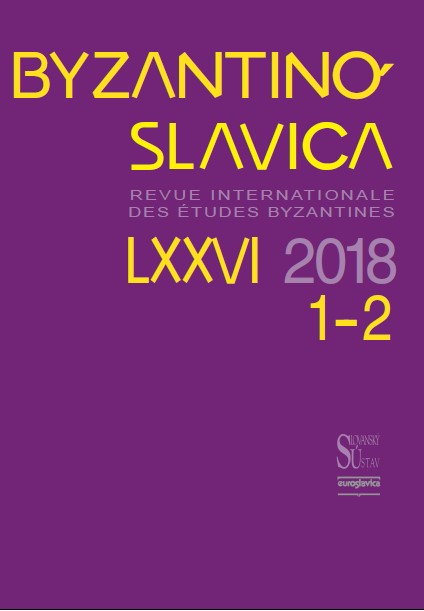Un parziale autografo di Marco monaco Il manoscritto della Biblioteca Vaticana Chig. R.V.33 (gr. 27)
A partial autograph of Marco monaco. The manuscript of the Vatican Library Chig. R.V.33 (gr. 27)
Author(s): Francesco D’AiutoSubject(s): Theory of Literature
Published by: AV ČR - Akademie věd České republiky - Slovanský ústav and Euroslavica
Keywords: manuscript Chrisianus R.V.33; Mark the Monk;literature analyses;paleography;codicology
Summary/Abstract: Through focused on palaeographical and codicological features, a new analytical description of the manuscript Chisianus R.V.33 (gr. 27) provides signifi cant insight into the idiosyncratic nature of this important witness (datable to the AD 1260s) for Mark the Monk’s ascetic fl orilegia. This manuscript was copied by more than twenty scribes, whose hands alternate with one another in a curiously frenetic manner: almost 300 changes of hand occur in this manuscript of nearly 350 folia. Responsible for assigning the portions to be transcribed by the other scribes, the leading hand among them is shown to have been that of the author himself, i.e. Mark the Monk. His activity can be followed step by step from the beginning of this collective work to its fi nal sections, when he probably was compelled by illness to cede his role of chief scribe to one of his collaborators and disciples. Many of these were not professional calligraphers, or were even semi-literate, and they were probably the monks and novices of an unidentifi ed monastery where Mark lived. Finally, some observations are made regarding the composition and transcription of such a collection of fl orilegia. These activities were inextricably intertwined, since the author not only coordinated the copying of his texts from an already existing torso or partial antigraph of his fl orilegia, but probably went on adding other excerpts to his main fl orilegium both while having it transcribed and even later, inserting them in spaces that had been left blank at the end of each section of the book. This explains well the author’s regret – expressed in his autograph colophon on fol. 347v – at not having had the chance to complete the «writing» of his book «by his own hand». Indeed, literary composition and transcription tend to coincide, to some extent, in this sort of collections of excerpts.
Journal: Byzantinoslavica - Revue internationale des Etudes Byzantines
- Issue Year: LXXVI/2018
- Issue No: 1-2
- Page Range: 100-129
- Page Count: 30
- Language: Italian
- Content File-PDF

